Abstract
A mathematical model is formulated for the development of a population of cells in which the individual members may grow and divide or die. A given cell is characterized by its age and volume, and these parameters are assumed to determine the rate of volume growth and the probability per unit time of division or death. The initial value problem is formulated, and it is shown that if cell growth rate is proportional to cell volume, then the volume distribution will not converge to a time-invariant shape without an added dispersive mechanism. Mathematical simplications which are possible for the special case of populations in the exponential phase or in the steady state are considered in some detail. Experimental volume distributions of mammalian cells in exponentially growing suspension cultures are analyzed, and growth rates and division probabilities are deduced. It is concluded that the cell volume growth rate is approximately proportional to cell volume and that the division probability increases with volume above a critical threshold. The effects on volume distribution of division into daughter cells of unequal volumes are examined in computer models.
Full text
PDF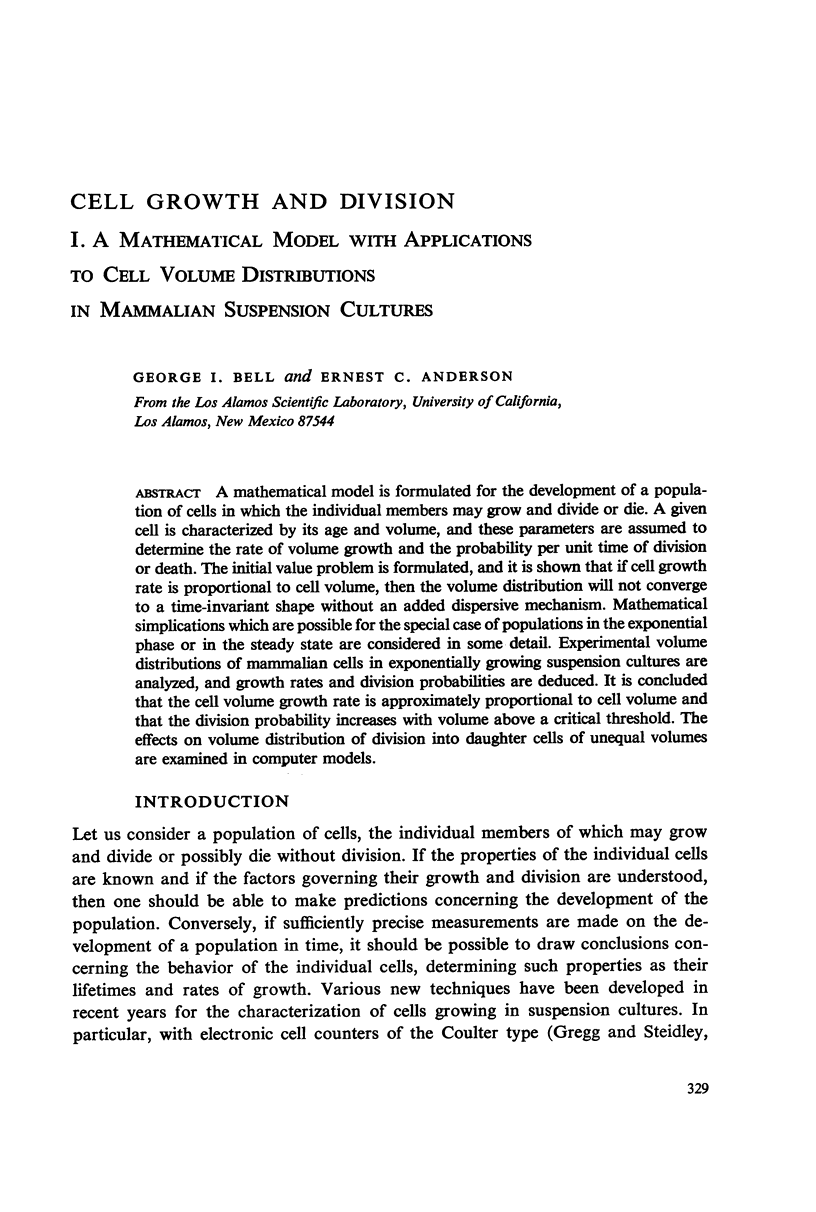
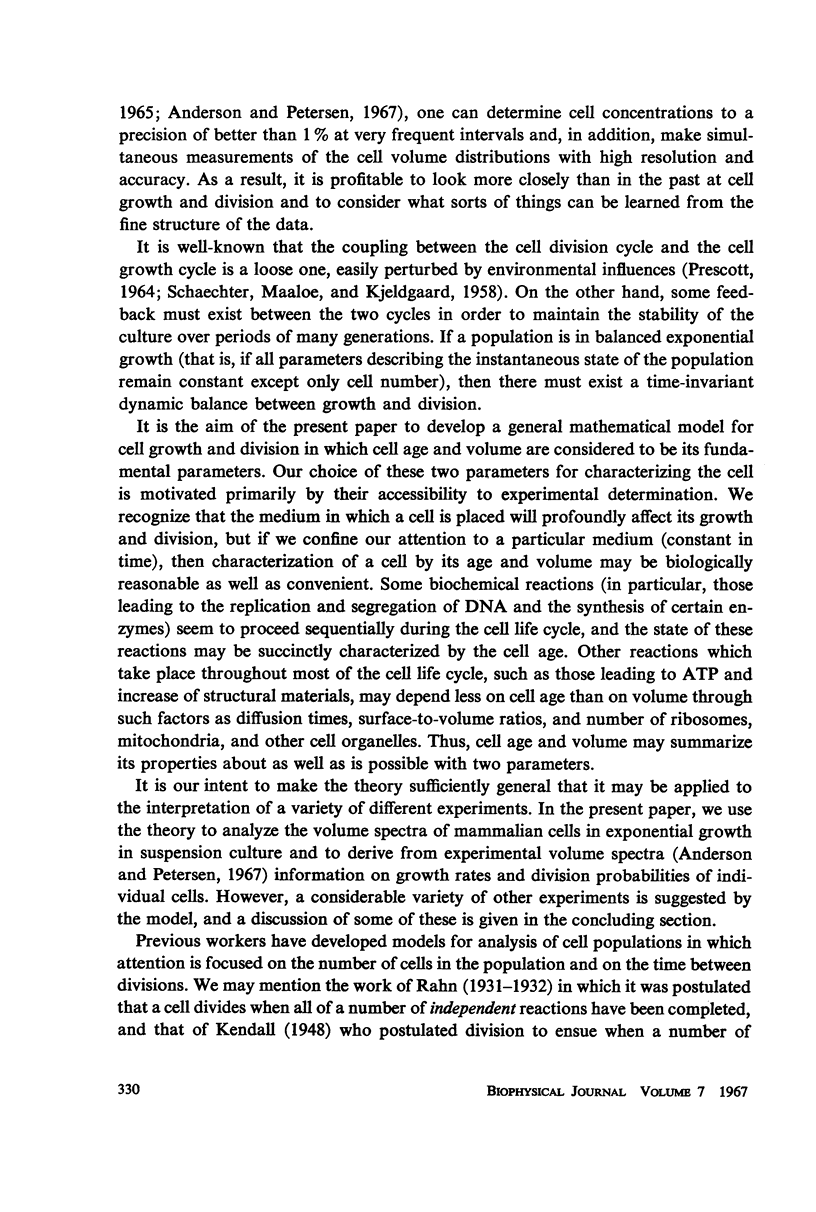
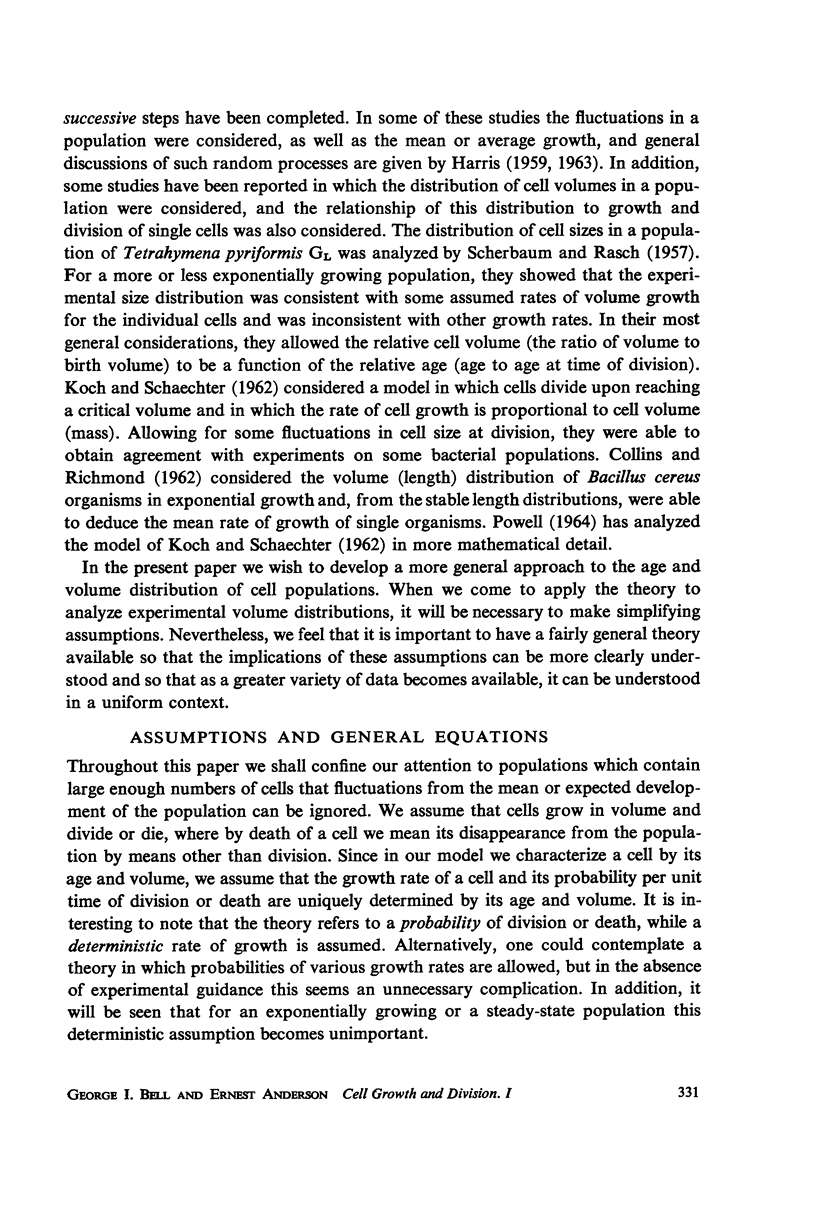
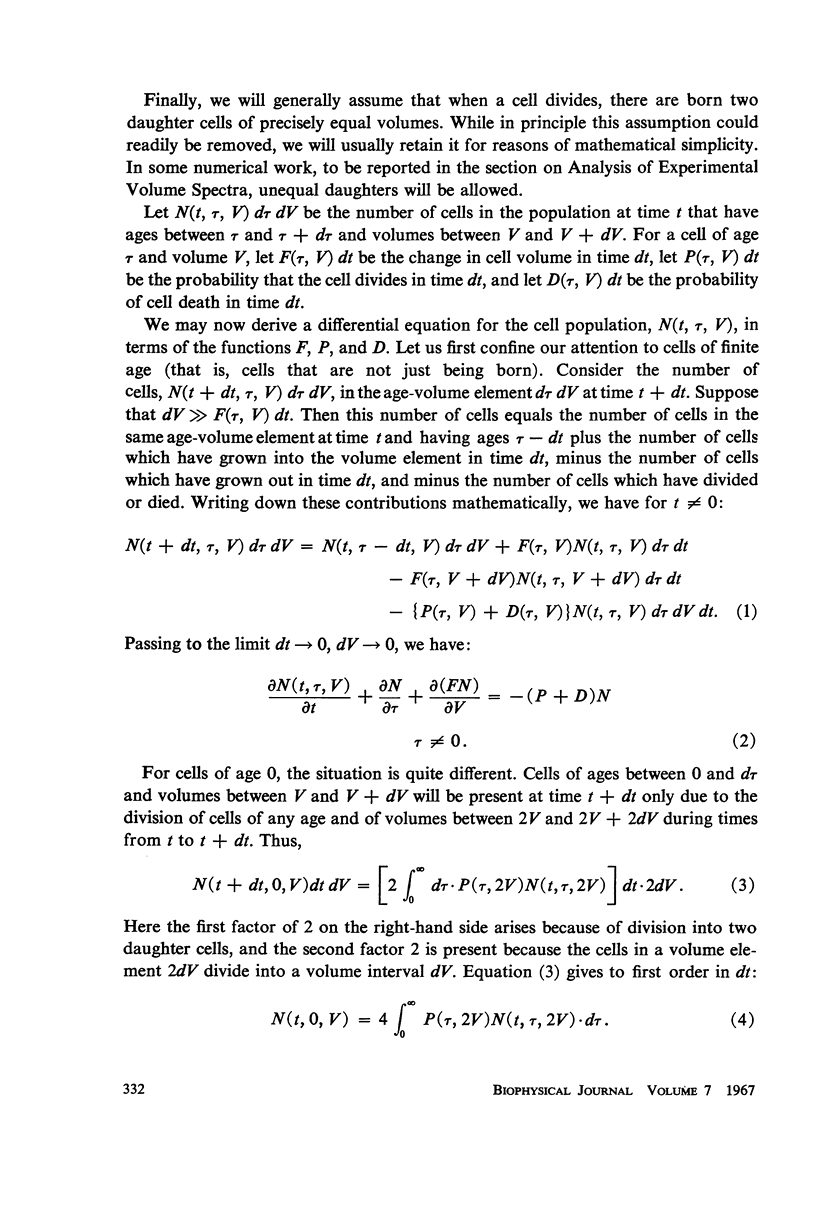
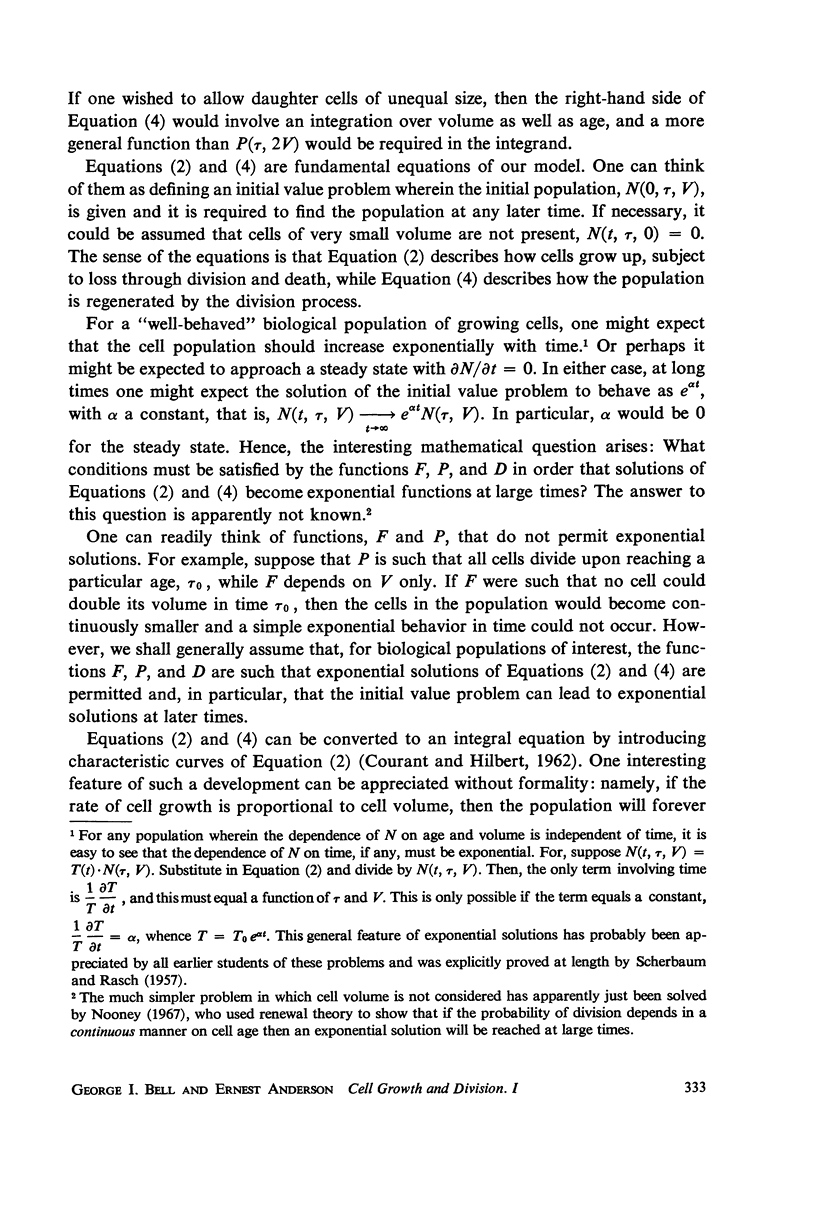
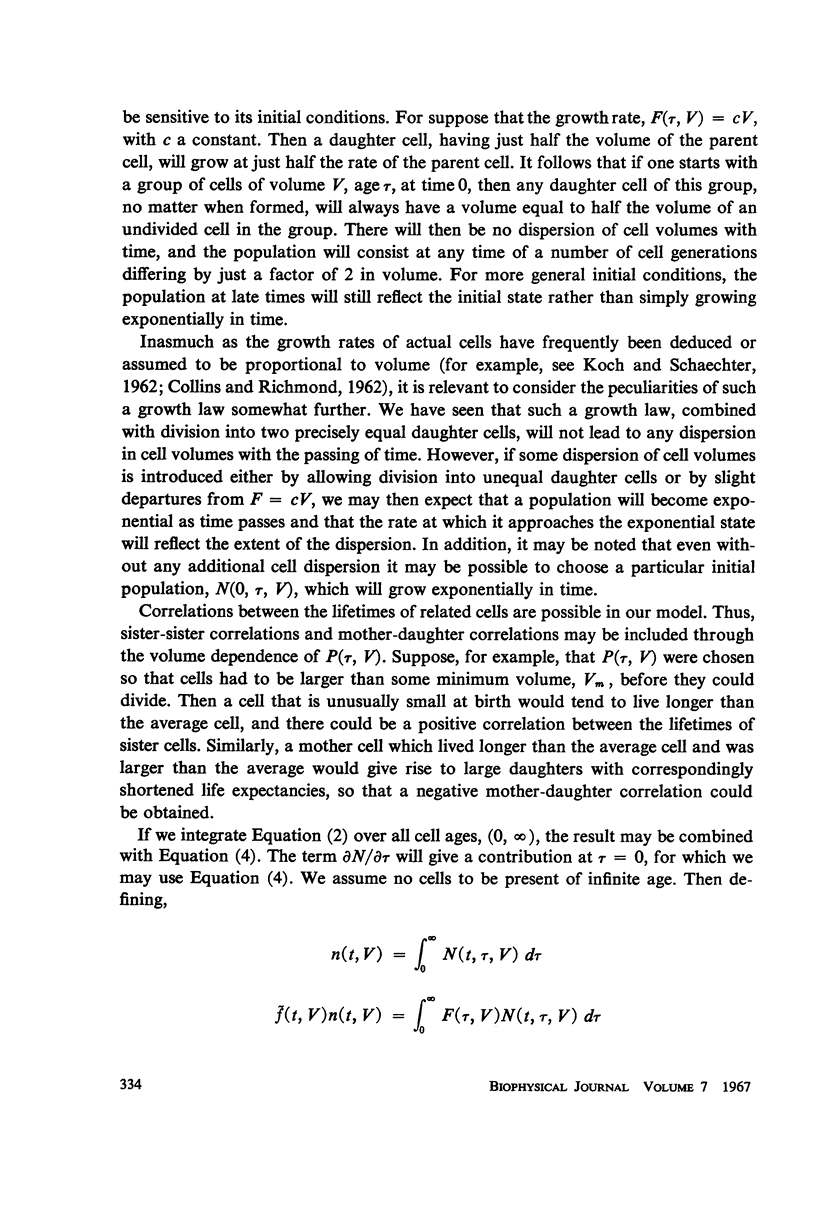
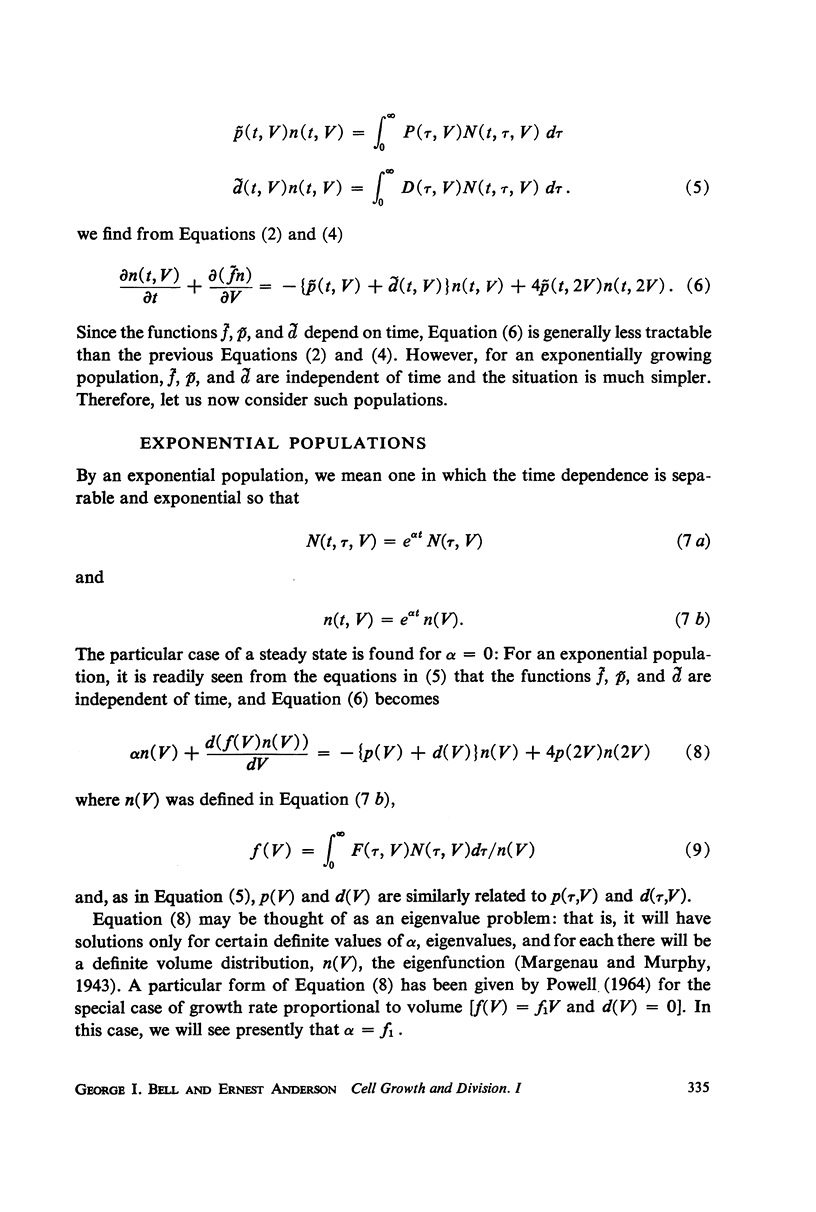
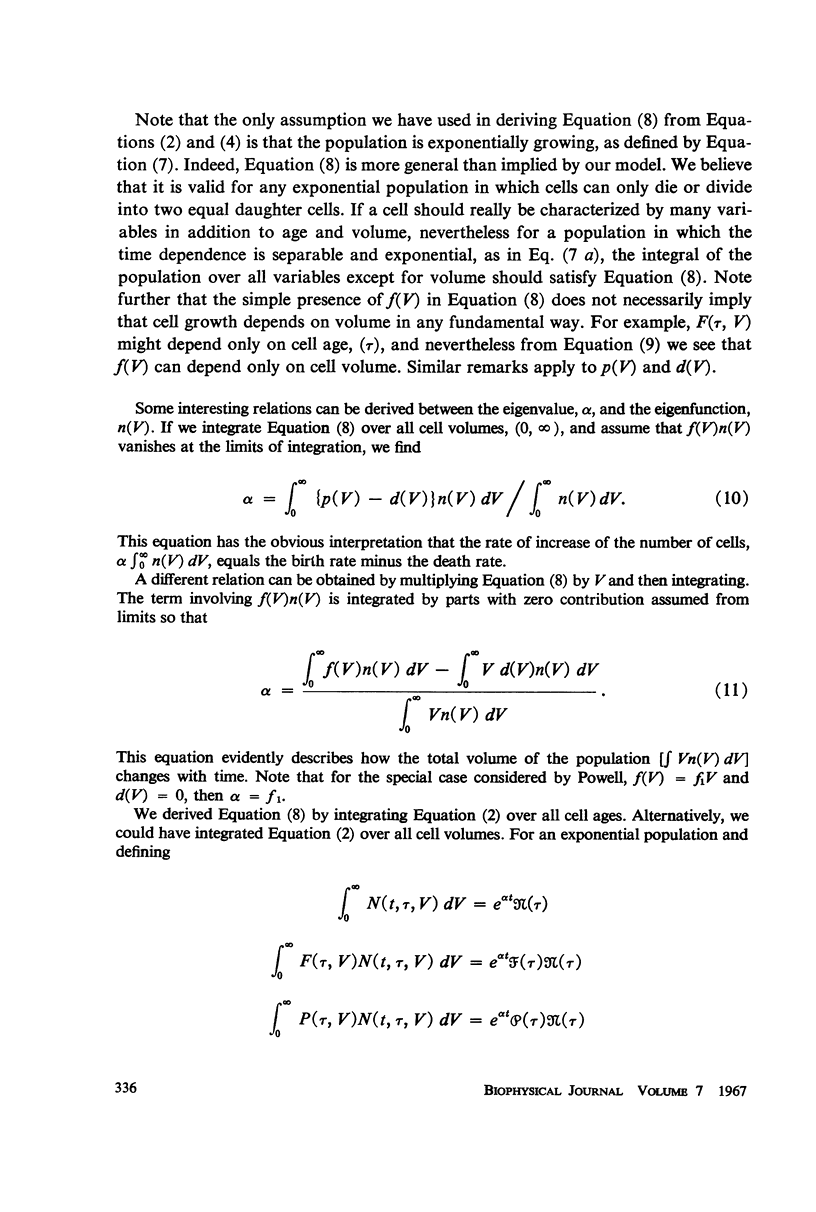
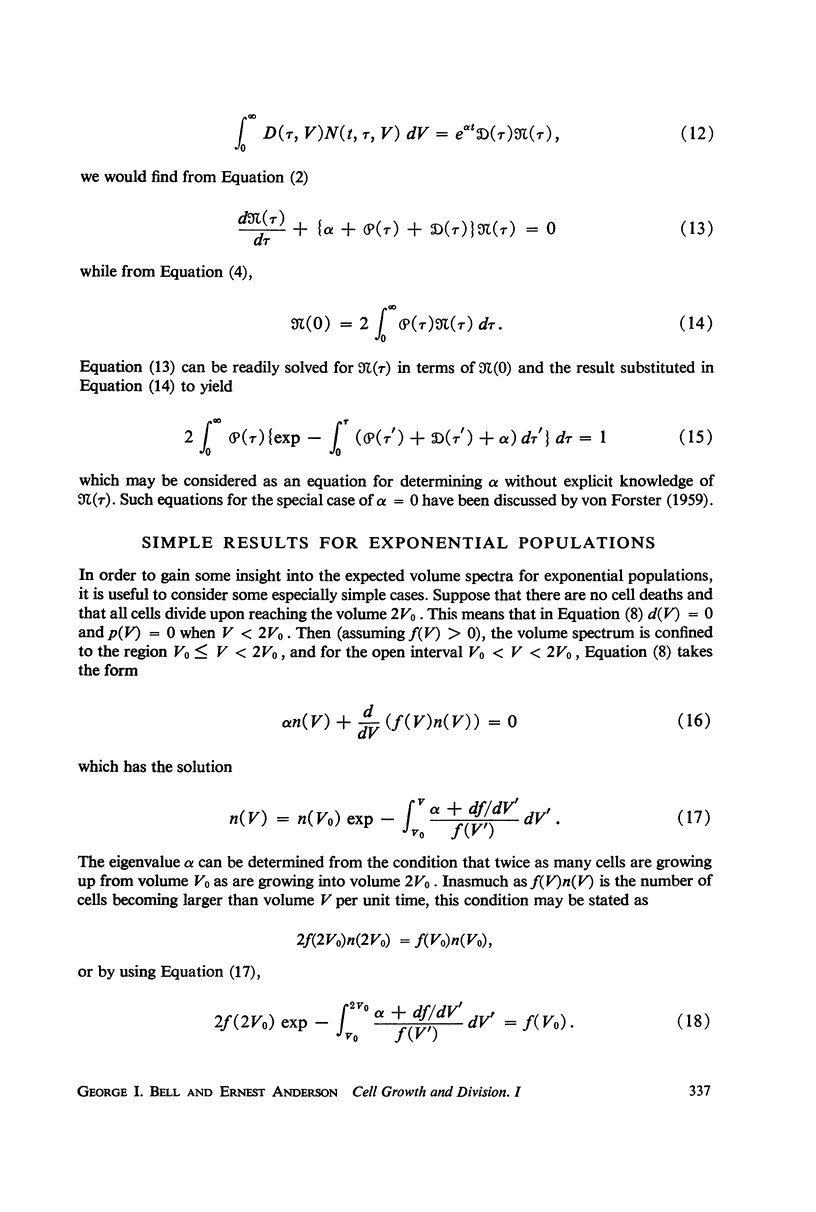
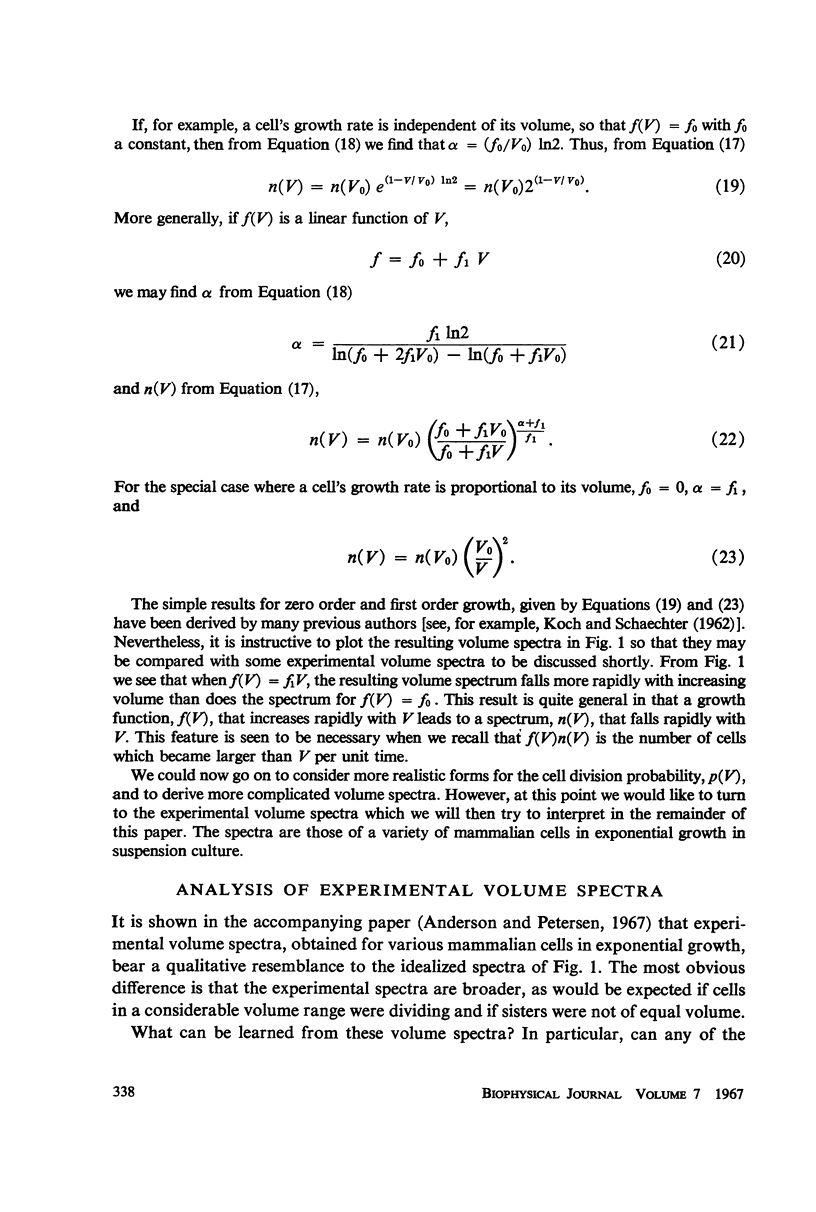
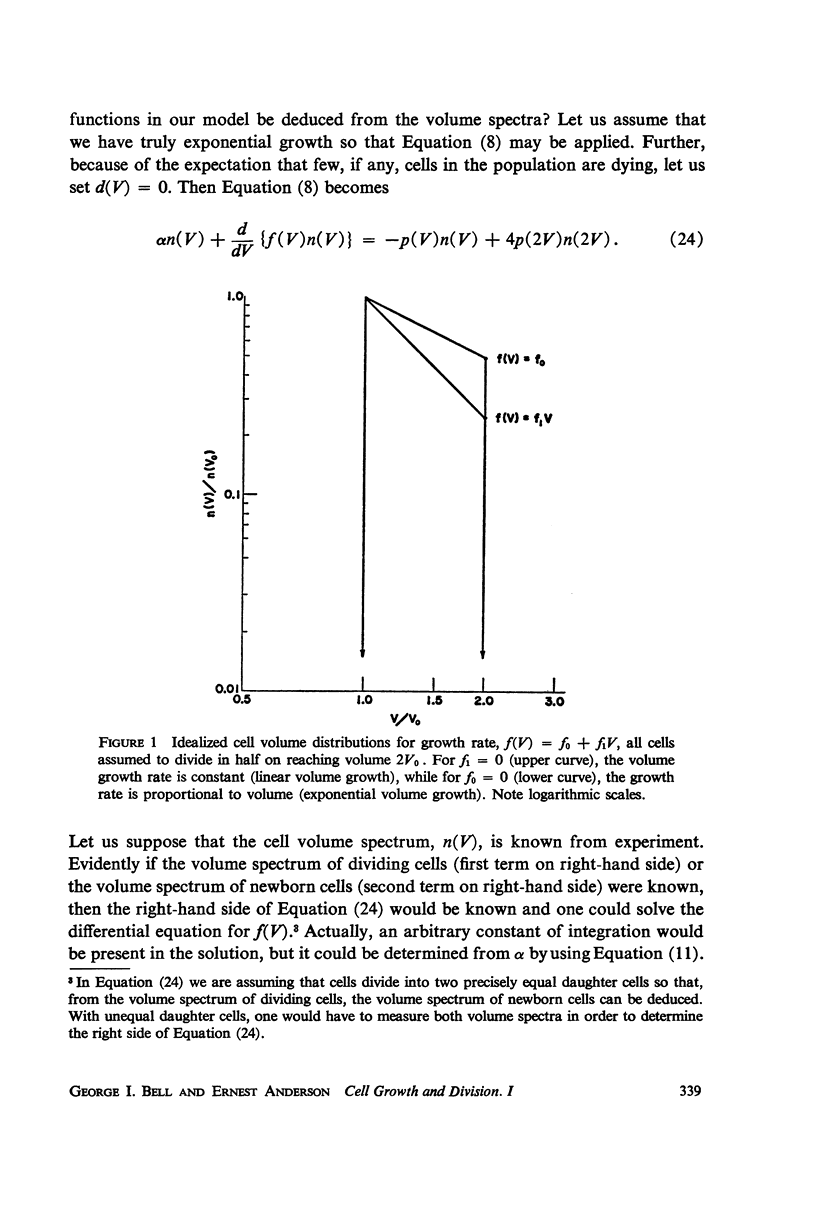
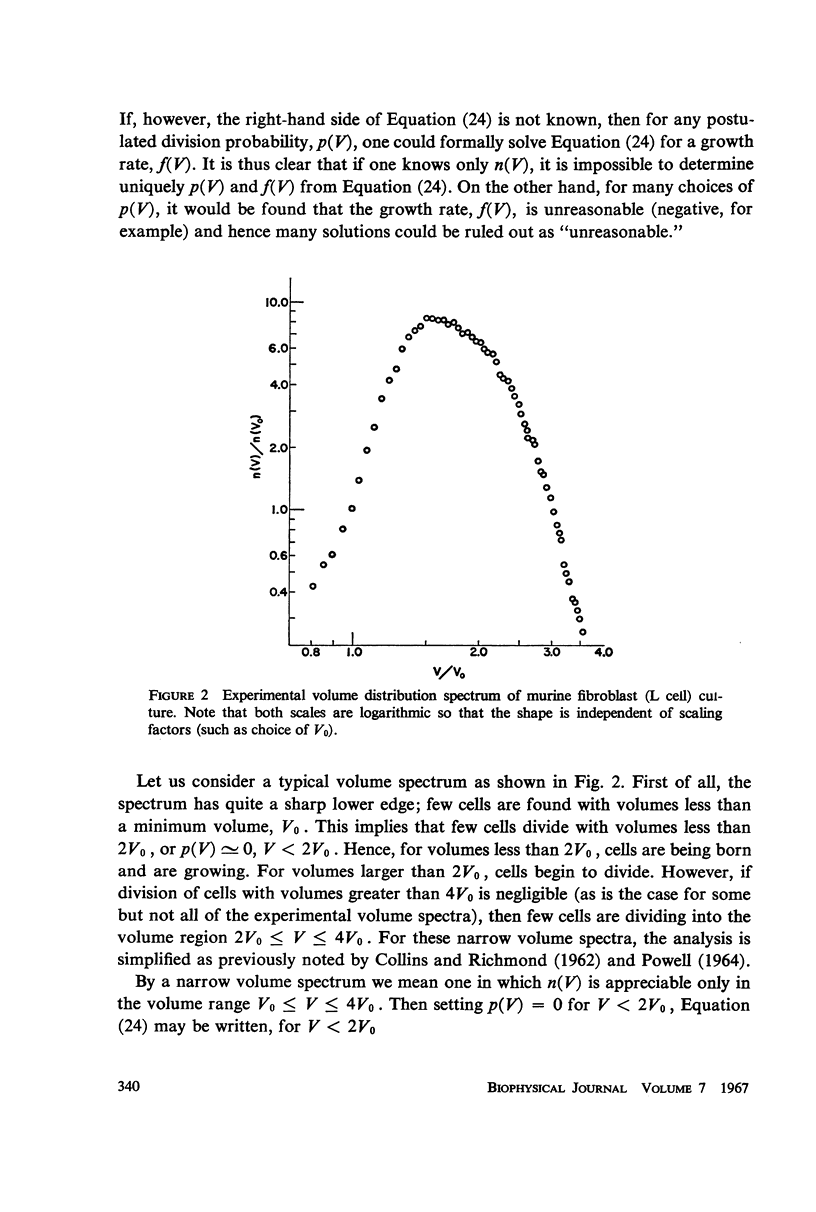
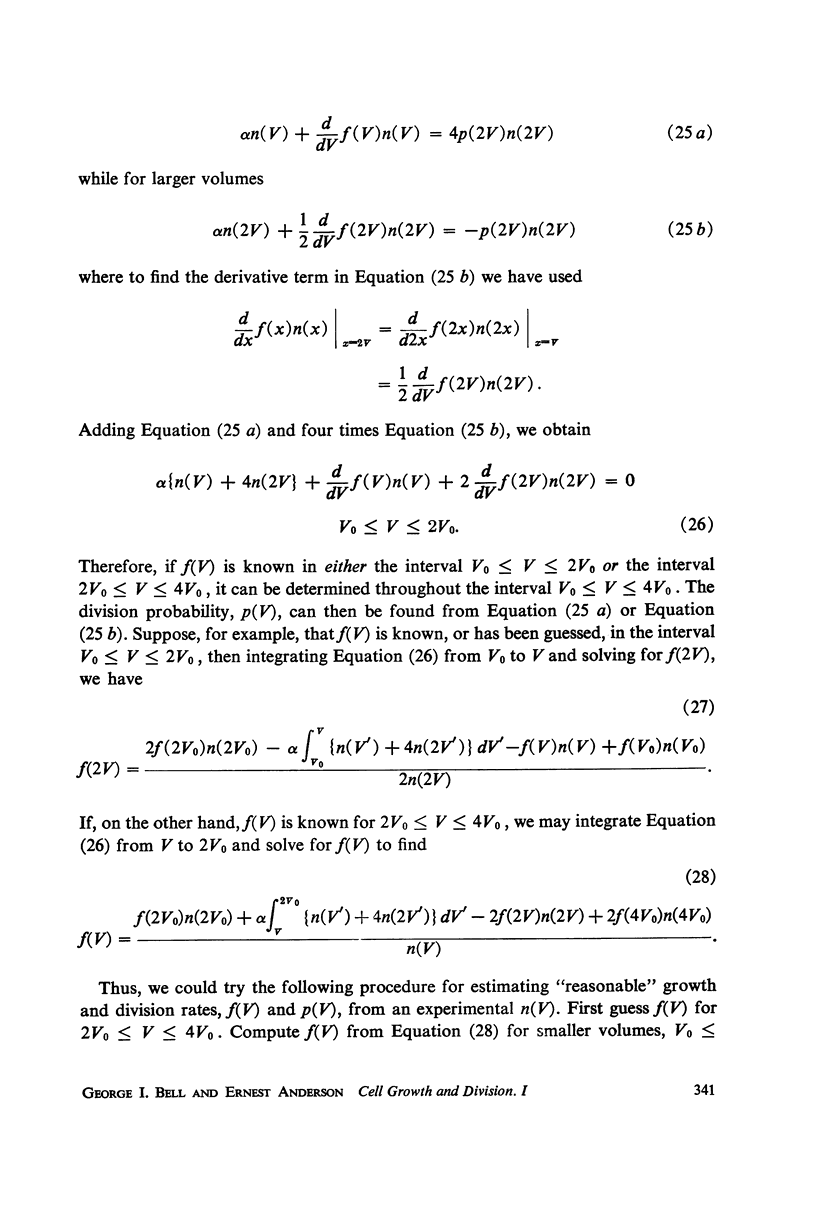
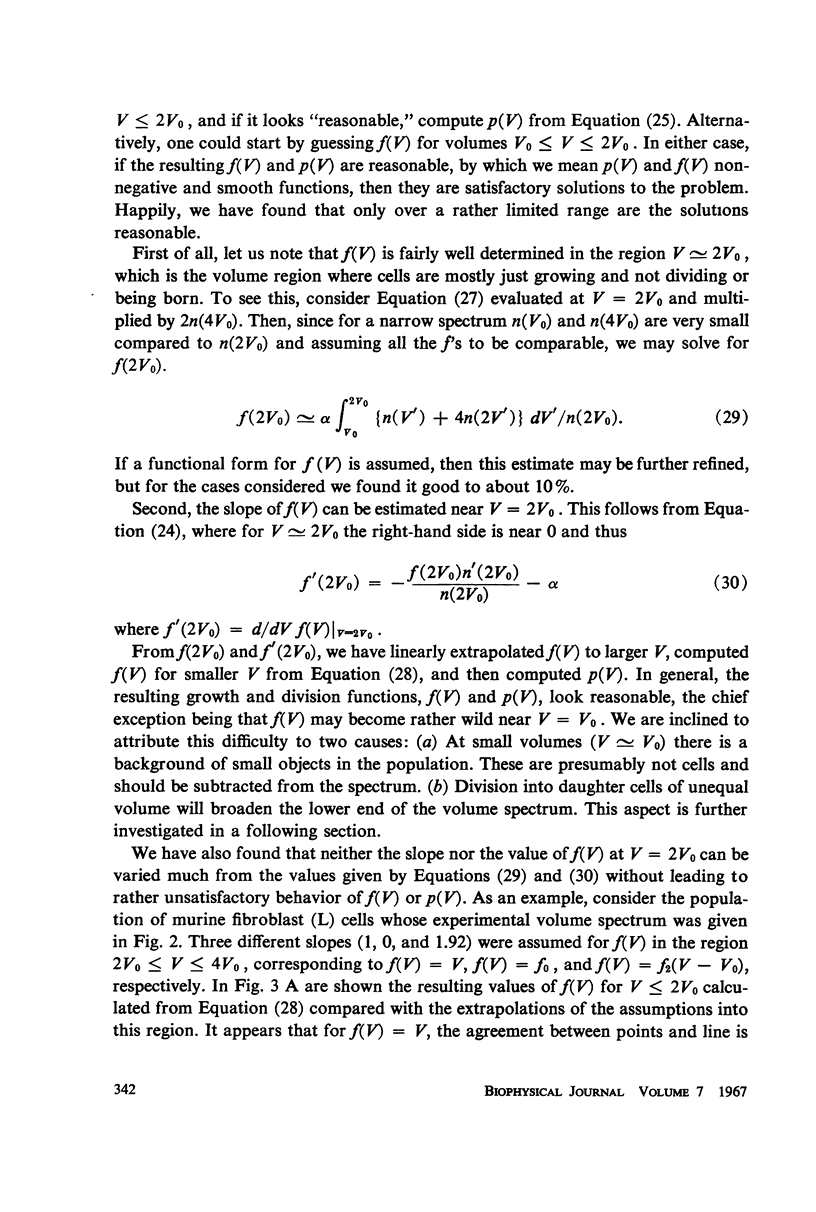
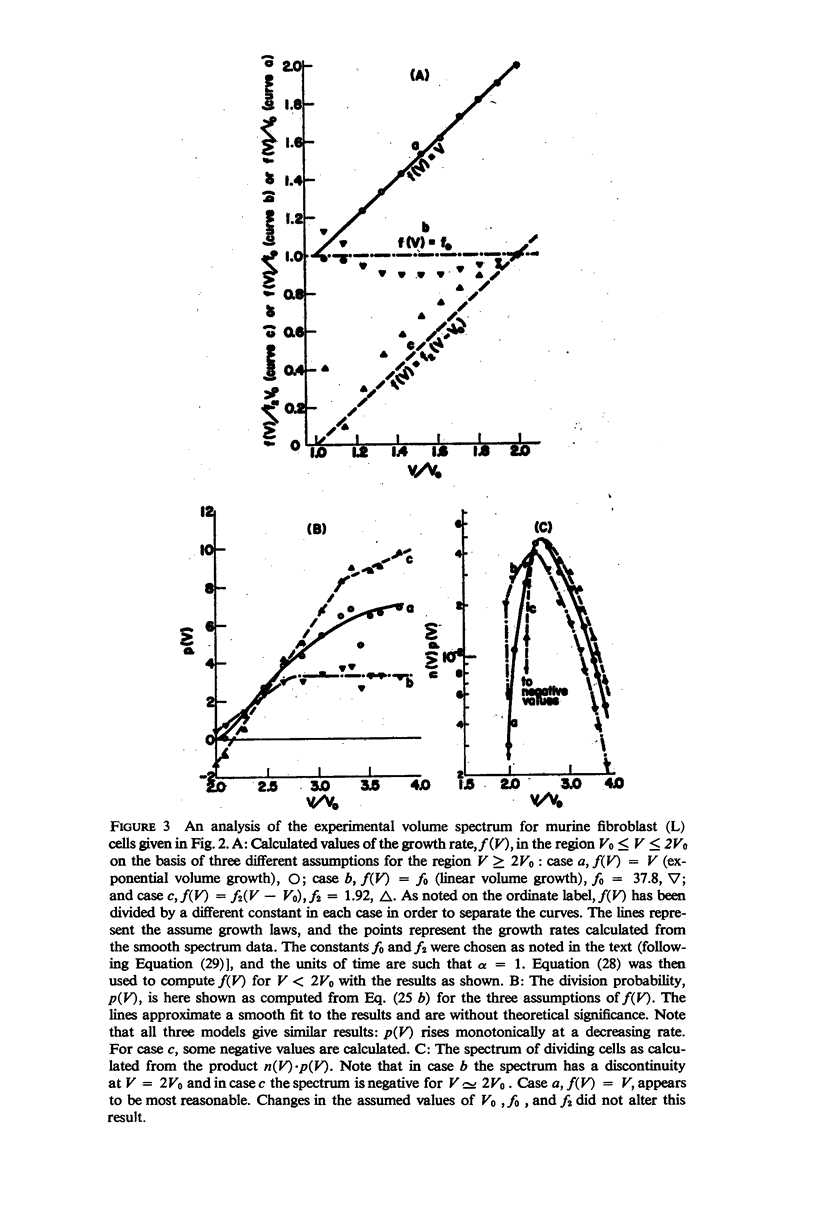
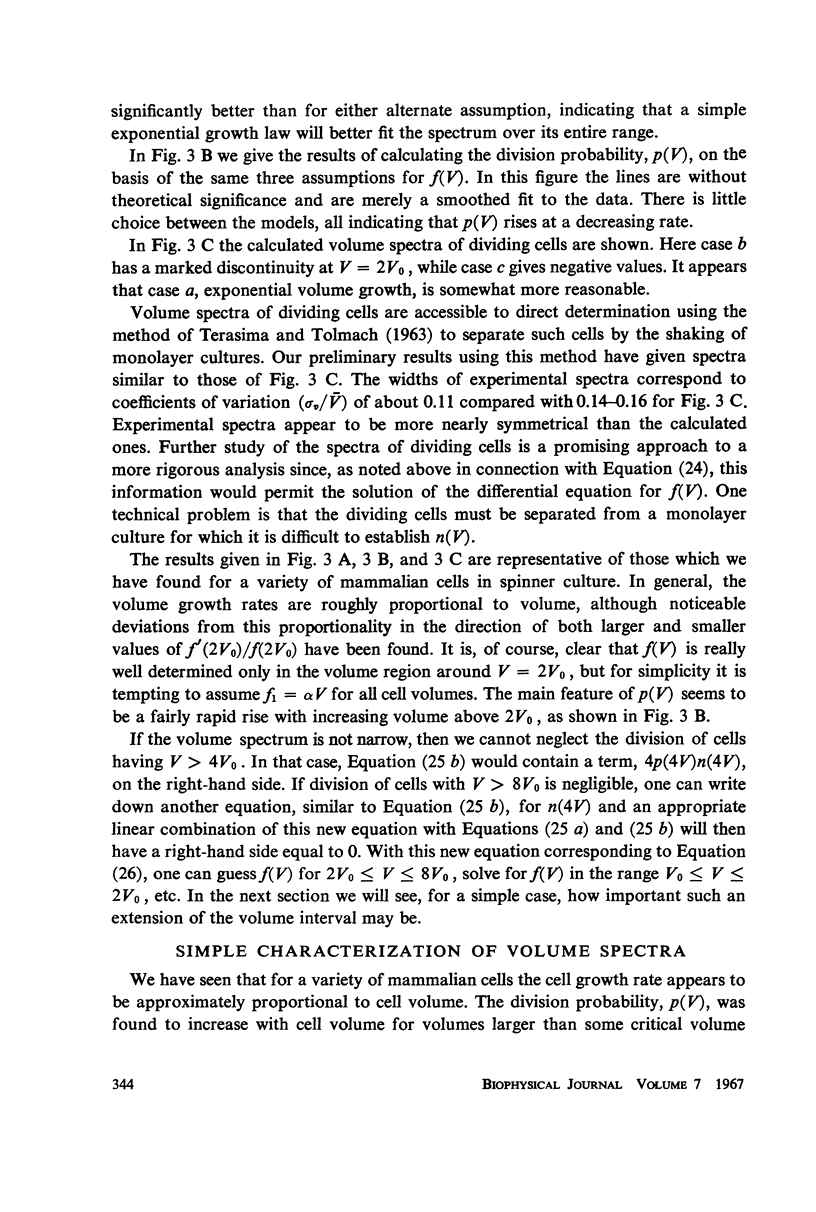
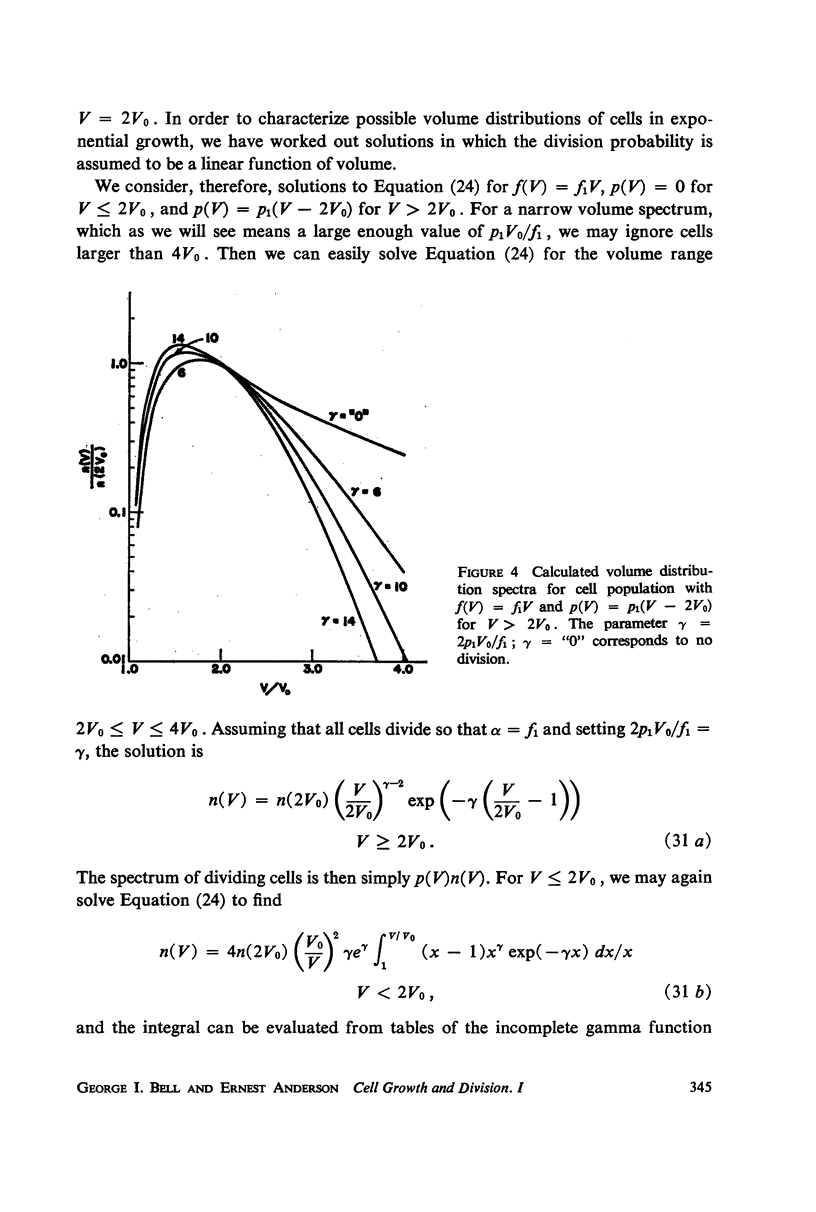
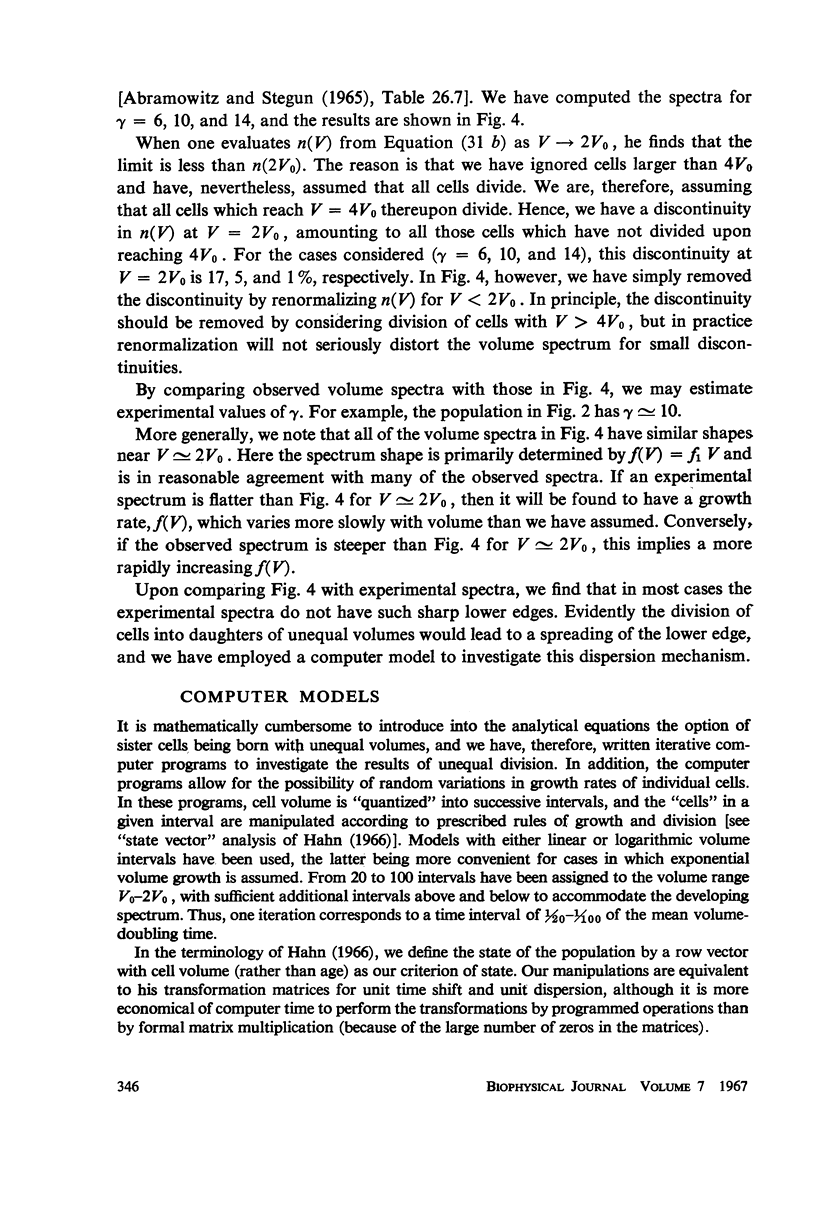
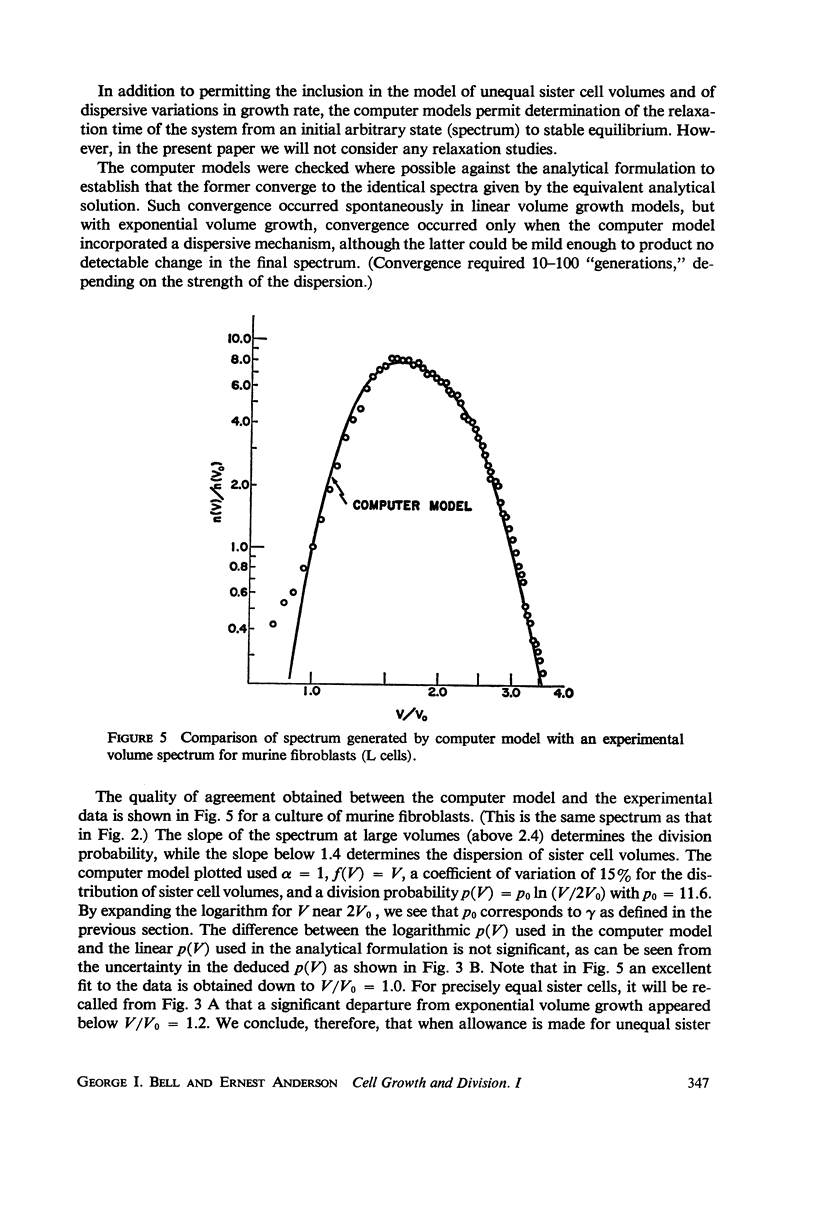
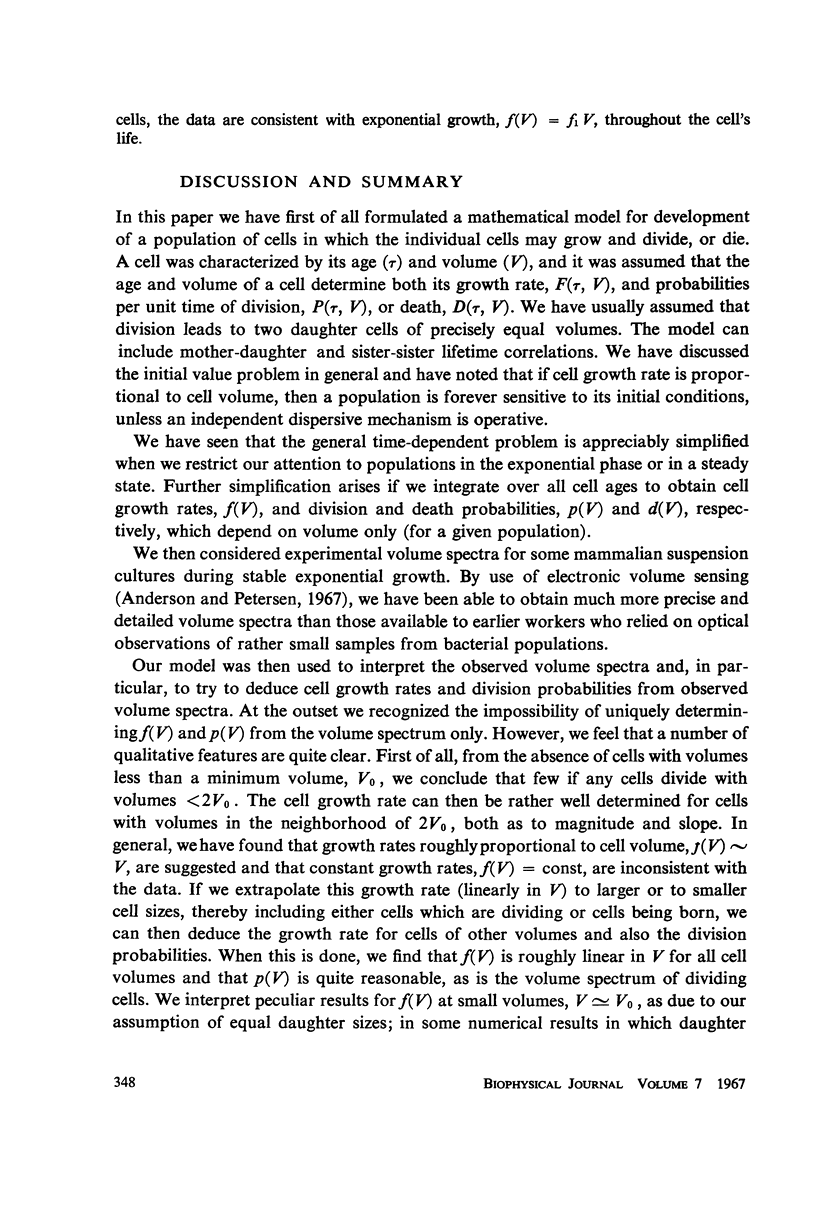
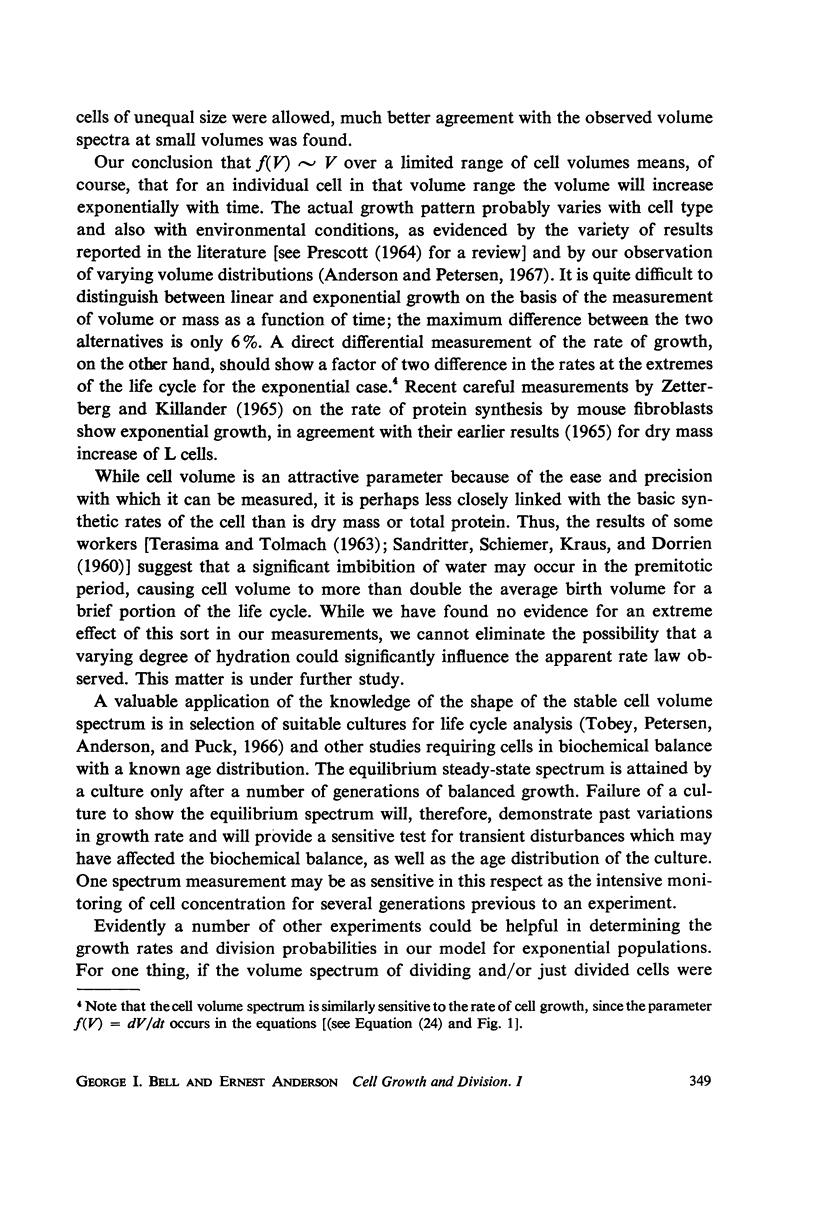
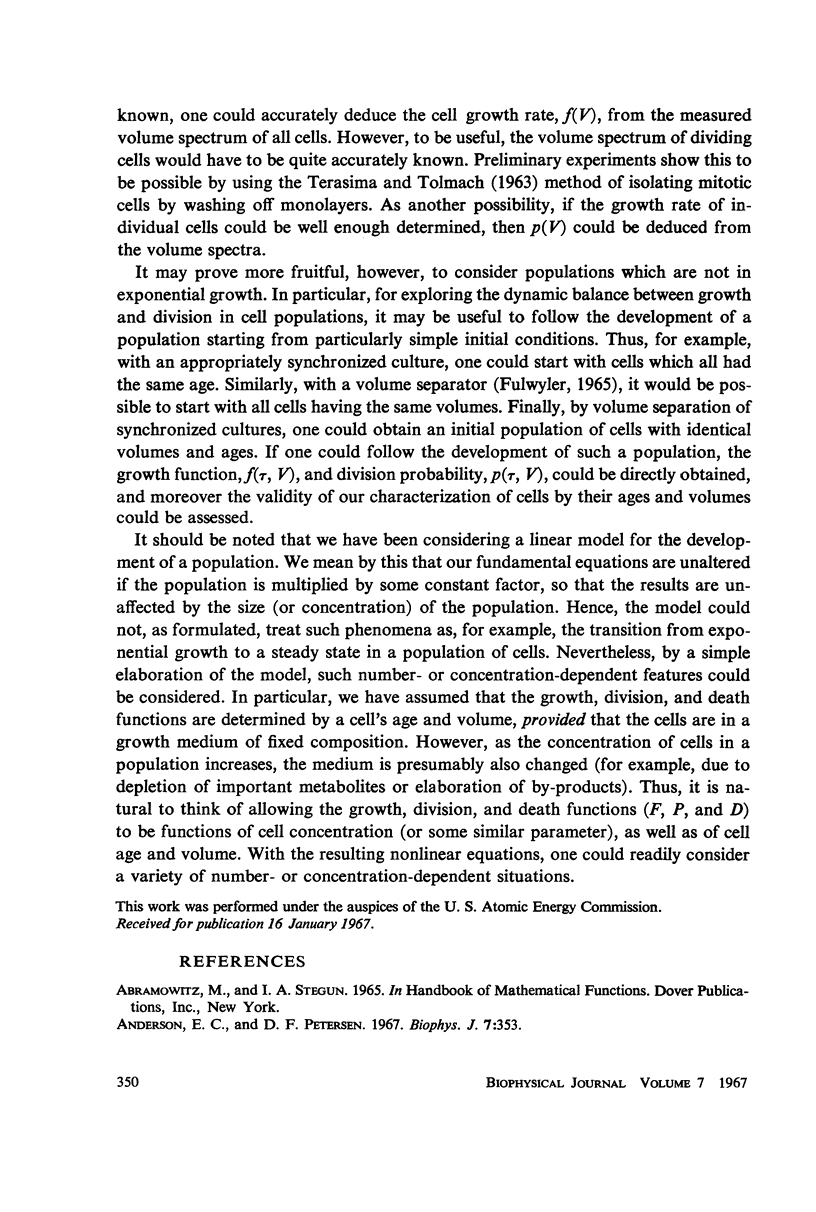
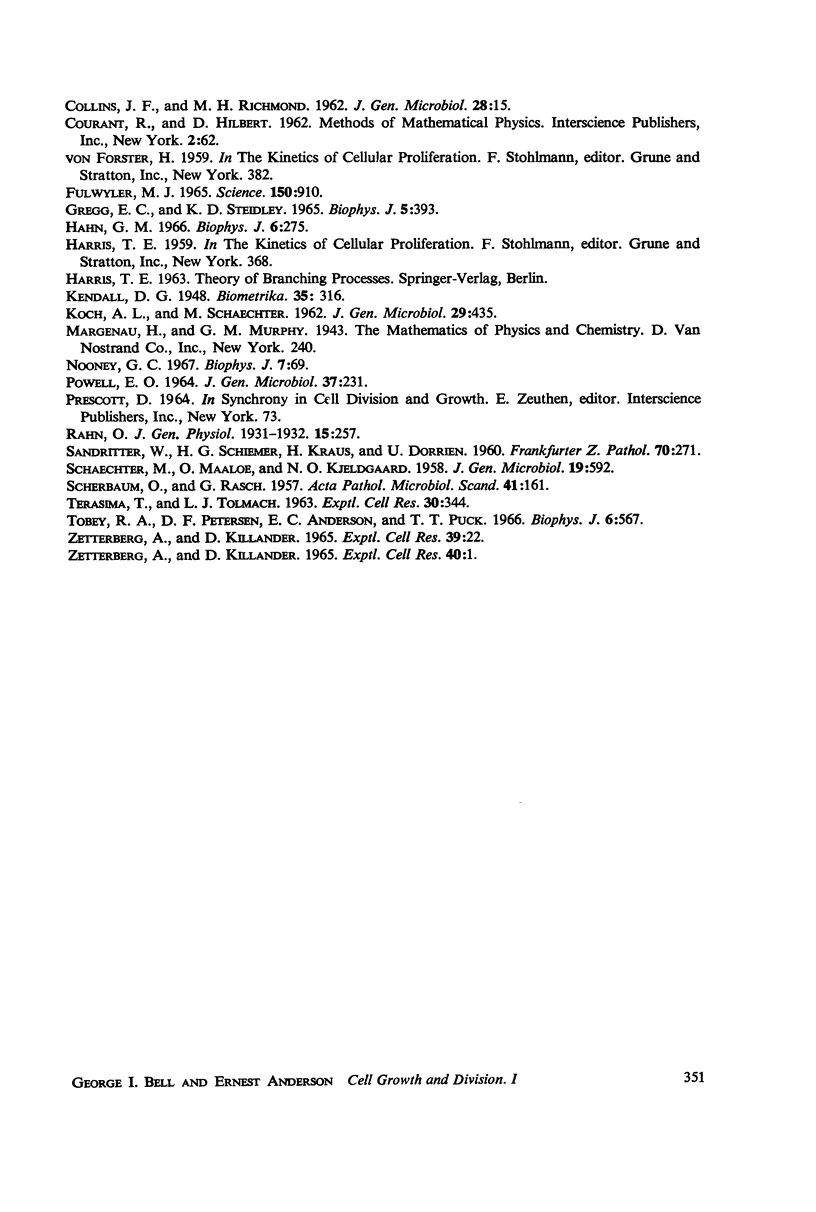
Selected References
These references are in PubMed. This may not be the complete list of references from this article.
- Anderson E. C., Petersen D. F. Cell growth and division. II. Experimental studies of cell volume distributions in mammalian suspension cultures. Biophys J. 1967 Jul;7(4):353–364. doi: 10.1016/S0006-3495(67)86593-7. [DOI] [PMC free article] [PubMed] [Google Scholar]
- COLLINS J. F., RICHMOND M. H. Rate of growth of Bacillus cereus between divisions. J Gen Microbiol. 1962 Apr;28:15–33. doi: 10.1099/00221287-28-1-15. [DOI] [PubMed] [Google Scholar]
- Fulwyler M. J. Electronic separation of biological cells by volume. Science. 1965 Nov 12;150(3698):910–911. doi: 10.1126/science.150.3698.910. [DOI] [PubMed] [Google Scholar]
- Gregg E. C., Steidley K. D. Electrical counting and sizing of mammalian cells in suspension. Biophys J. 1965 Jul;5(4):393–405. doi: 10.1016/S0006-3495(65)86724-8. [DOI] [PMC free article] [PubMed] [Google Scholar]
- Hahn G. M. State vector description of the proliferation of mammalian cells in tissue culture. I. Exponential growth. Biophys J. 1966 May;6(3):275–290. doi: 10.1016/S0006-3495(66)86656-0. [DOI] [PMC free article] [PubMed] [Google Scholar]
- KOCH A. L., SCHAECHTER M. A model for statistics of the cell division process. J Gen Microbiol. 1962 Nov;29:435–454. doi: 10.1099/00221287-29-3-435. [DOI] [PubMed] [Google Scholar]
- SANDRITTER W., SCHIEMER H. G., KRAUS H., DOERRIEN U. [Interference microscopic studies on the growth of individual cells (HeLa cells) in tissue culture]. Frankf Z Pathol. 1960;70:271–299. [PubMed] [Google Scholar]
- SCHAECHTER M., MAALOE O., KJELDGAARD N. O. Dependency on medium and temperature of cell size and chemical composition during balanced grown of Salmonella typhimurium. J Gen Microbiol. 1958 Dec;19(3):592–606. doi: 10.1099/00221287-19-3-592. [DOI] [PubMed] [Google Scholar]
- SCHERBAUM O., RASCH G. Cell size distribution and single cell growth in Tetrahymena pyriformis GL. Acta Pathol Microbiol Scand. 1957;41(3):161–182. doi: 10.1111/j.1699-0463.1957.tb01014.x. [DOI] [PubMed] [Google Scholar]
- TERASIMA T., TOLMACH L. J. Growth and nucleic acid synthesis in synchronously dividing populations of HeLa cells. Exp Cell Res. 1963 Apr;30:344–362. doi: 10.1016/0014-4827(63)90306-9. [DOI] [PubMed] [Google Scholar]
- Tobey R. A., Petersen D. F., Anderson E. C., Puck T. T. Life cycle analysis of mammalian cells. 3. The inhibition of division in Chinese hamster cells by puromycin and actinomycin. Biophys J. 1966 Sep;6(5):567–581. doi: 10.1016/s0006-3495(66)86678-x. [DOI] [PMC free article] [PubMed] [Google Scholar]


